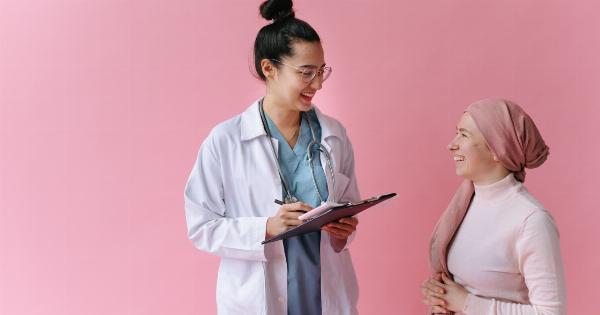Prostate cancer is the second most common cancer affecting men worldwide. The diagnosis and management of prostate cancer have become more advanced over the years and imaging modalities are playing a significant role in this process.
Magnetic Resonance Imaging (MRI) has emerged as a promising imaging modality for the diagnosis and management of prostate cancer, especially in advanced cases. In this article, we will discuss the role of MRI imaging in the diagnosis of advanced prostate cancer.
What is Advanced Prostate Cancer?
Advanced prostate cancer (APC) refers to prostate cancer that has spread beyond the prostate gland to other parts of the body. Common sites of metastasis include the bones, lymph nodes, liver, and lungs.
APC is generally considered to be an incurable disease and treatment is often focused on slowing down the progression of the cancer and reducing symptoms.
Current Methods for the Diagnosis of APC
There are several methods that are currently used for the diagnosis of APC.
These include imaging modalities such as Computed Tomography (CT) scans and bone scans, as well as blood tests that measure levels of prostate-specific antigen (PSA) and other markers. However, these methods have limitations in their ability to accurately detect and locate the extent of APC. This is where MRI imaging comes in.
The Role of MRI Imaging in the Diagnosis of APC
MRI imaging has several advantages in the diagnosis of APC. Firstly, it is a non-invasive technique that can provide detailed images of the prostate gland and surrounding tissues.
Secondly, it has high resolution and contrast, which allows for the visualization of small tumors and the precise localization of larger tumors. Lastly, MRI imaging can detect the presence and extent of metastatic disease in other parts of the body, which can be crucial for the management of APC.
MRI Imaging Techniques for APC Diagnosis
There are several MRI imaging techniques that are used for the diagnosis of APC. These include:.
- T2-weighted imaging (T2WI): This technique provides high-resolution images of the prostate gland and surrounding tissues. It is useful for detecting and localizing tumors within the prostate gland.
- Diffusion-weighted imaging (DWI): This technique measures the diffusion of water molecules in tissues. Areas of high cellularity, such as tumors, have restricted diffusion and appear bright on DWI images. DWI is useful for detecting and characterizing tumors within the prostate gland as well as the detection of metastatic disease in other parts of the body.
- Dynamic contrast-enhanced MRI (DCE-MRI): This technique involves the injection of a contrast agent that highlights areas of increased vascularity, such as tumors. DCE-MRI is useful for detecting and characterizing tumors within the prostate gland as well as the detection of metastatic disease in other parts of the body.
Advantages of MRI Imaging for APC Diagnosis
There are several advantages of using MRI imaging for the diagnosis of APC. These include:.
- High sensitivity and specificity: MRI imaging has been shown to have high sensitivity and specificity for the detection of APC. This means that it is able to accurately detect the presence of cancerous tissue as well as identify areas of metastatic disease.
- Improved treatment planning: MRI imaging provides detailed information about the location and extent of tumors, which can be used to guide treatment planning. This information can be used to determine the most appropriate treatment approach, whether it be surgery, radiation therapy, or chemotherapy.
- Non-invasive: MRI imaging is a non-invasive technique that does not involve the use of ionizing radiation. This makes it a safe option for patients who require repeated imaging studies.
Limitations of MRI Imaging for APC Diagnosis
Despite the advantages of MRI imaging for the diagnosis of APC, there are also limitations to its use. These include:.
- Cost: MRI imaging can be expensive compared to other imaging modalities. This may limit its use in some healthcare settings.
- Patient comfort: MRI imaging can be uncomfortable for some patients due to the need to lie still in a confined space for an extended period of time. This may limit its use in some patient populations.
- Operator-dependent: The quality of MRI imaging is highly dependent on the experience and expertise of the operator. This may limit its use in some healthcare settings.
Conclusion
MRI imaging has emerged as a promising imaging modality for the diagnosis and management of APC. It provides high-resolution images of the prostate gland and surrounding tissues, as well as the detection of metastatic disease in other parts of the body.
The use of MRI imaging can improve treatment planning and outcomes for patients with APC. However, there are also limitations to its use, including cost, patient comfort, and operator-dependence.
Overall, MRI imaging represents a valuable tool for the diagnosis and management of APC and is likely to play an increasingly important role in the future.





























